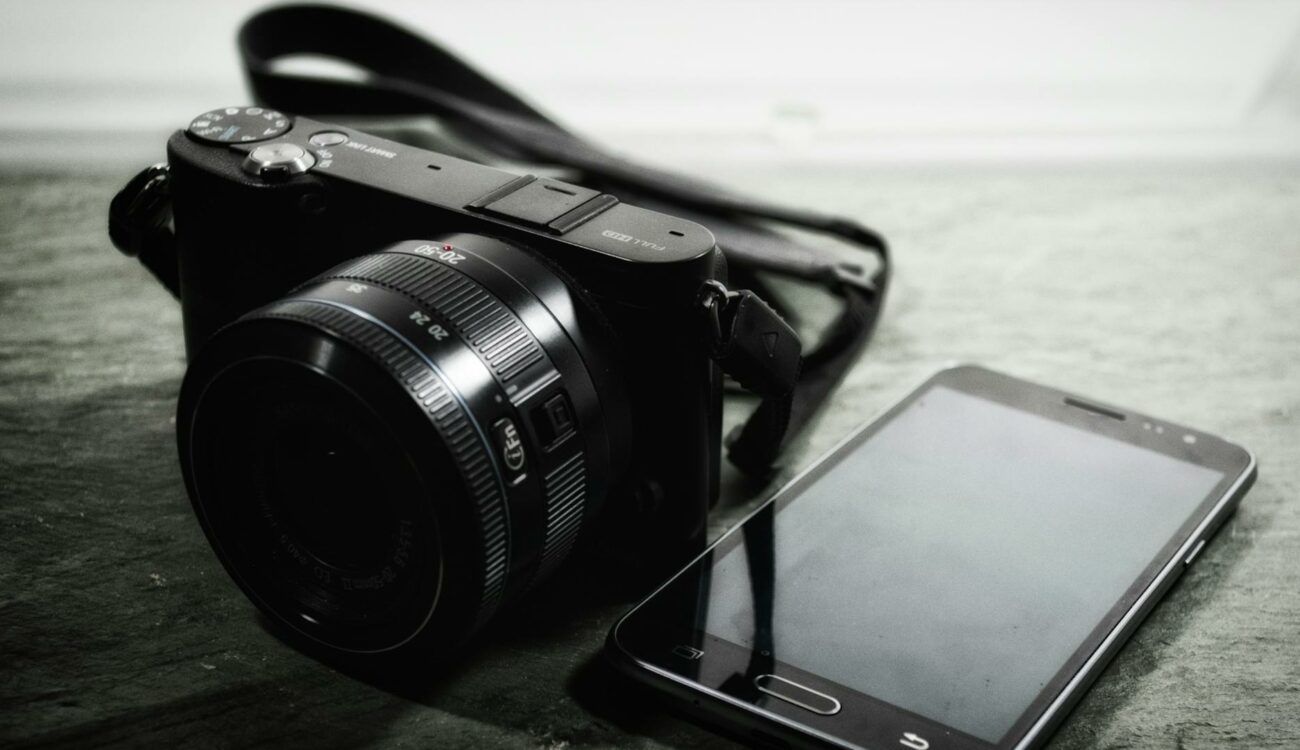
The modern photographic landscape looks vastly different than it did 25 years ago. Before about the year 2000, photography was exclusively an analog medium. “Digital Photography” existed, but not in the way we perceive it today. However, as technology advanced, the digital camera became more and more capable of providing the sorts of images we had come to expect from film photography. And now, everyone carries a camera with them everywhere they go. As we frequently report on camera sales, people are obviously still buying them. So why buy a dedicated camera system when smartphones are so widely available? Let’s explore a little further before making a decision, shall we?
Technology has advanced at such a fast pace, and it seems like we may now be entering a new era of photography with the integration of AI into cameras, whether smartphones or not. So, while it’s unclear where we’re heading, it’s interesting to look back at where we came from.
Not so black and white
A fascinating animated infographic published by VisualCapitalist.com shows the growth of sales for cameras over the course of 70 years, from 1951 to 2021. What’s fascinating to me about this chart is that it doesn’t necessarily tell you what you think it does. In simple terms, it tells you how many people bought cameras over the years, and you see that sales skyrocketed when digital cameras were introduced into the market. But it doesn’t (only) mean that more people were buying cameras. It means that photography was becoming more accessible to people because of the shift in technology advancements – an increase in market demand that was not there prior.
At about the same time that the original iPhone was released in 2007, you see a sharp drop in digital camera sales but a continuing slope along an extrapolated vector of smartphone sales. It doesn’t take a mathematician to connect the dots that people were no longer buying digital cameras since their smartphones already had cameras on them. And in the past 10 years or so, smartphones have become almost as good as digital cameras at taking photos. But that still doesn’t really answer the prevalent question.
How to Photograph Everyone
The easy answer is yes, of course. Smartphones have replaced cameras in every real sense that matters. Camera sales are down, smartphone sales continue to rise, and everyone I know has a smartphone. If you ask a random stranger to take a photo of you, they’ll most likely pull out their smartphone to do so. So, it seems like smartphones won the war on photography. But if you consider the intention behind cameras, a much more sobering reality presents itself.
Why take photos at all?
How many photographs do you see daily that were taken with a smartphone? While it’s difficult to determine an exact number, I’d suggest it’s not many, aside from the obvious ones shared on social media, which we’re also viewing on our smartphones. Anytime that photography matters, I don’t believe you’d pull out a smartphone and consider that “professional photography.” For your wedding, you wouldn’t want to hire someone who shows up with their smartphone. For movie posters or glamour shots, you don’t use your iPhone (unless, maybe, if you’re Steven Soderberg). And when my son was born, although I did take a ton of photos on my smartphone, none of those are framed on my wall.
My point is that the digital camera boom of the 2000s created a new market of casual photographers. People taking more photos of their kids than they’ll ever look at again (of which, again, I am guilty; no judgment here). Or images of their food or pets or everyday life that may be posted to social media and then forgotten. Photography used to be about capturing an image that would last forever. While that remains true for many people, it’s now also common to share something funny you come across or send a photo of your fridge’s contents to your spouse while they’re grocery shopping. Not exactly long-lasting memories, but more an act of convenience. In fact, I can prove this because whenever we see a really good photographic image, we are always shocked when the photographer says, “I took this on my phone.”
My conclusion to a rhetorical question
So, when considering this infographic and its implications on photography, I would answer: no, smartphones have not replaced cameras. They have supplemented the need for photography for millions of people. They have created a new reason to take photographs, and exponentially made accessible the ability to take photographs of whatever you want for whatever reason you want. What used to be a skill, the chore of developing film is no longer an issue, and as such, it has created the capacity for countless other people, including a new generation of people that never even knew non-digital cameras, to learn and love photography for themselves. At least, that’s my take.
I’m interested to see what you think, though. Does my conclusion seem out of touch? Do you have a different point of view? We didn’t even discuss the filmmaking implications, so is that something you’d like to see in a future article? I’d love to discuss this in the comments below.
Cover Image: Steve Johnson via Pexels.com.





























